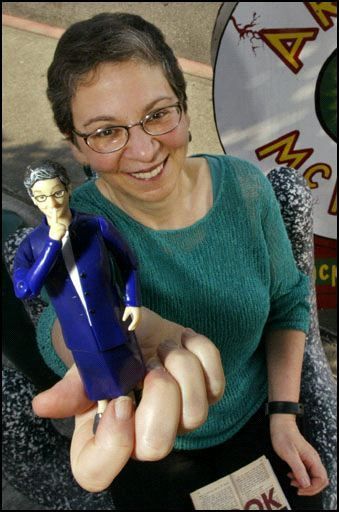
Most American illustrators know about the American Library Association’s Caldecott Award, but how many know anything about Randolph Caldecott? I received a Caldecott Honor in 2004, but I knew very little about him myself. My only reference was from Maurice Sendak’s essay in Caldecott & Co. which I read many years ago. There, he writes:
“Caldecott’s work heralds the beginning of the modern picture book. He devised an ingenious juxtaposition of picture and word, a counterpoint that never happened before. Words are left out – but the picture says it. Pictures are left out – but the words says it. In short, it is the invention of the picture book.”

I took these words to heart when I first read them. I realized that my favorite children’s book illustrators (of which Sendak is one) do just that – they augment the story rather than just retell it visually. I aspire to do the same. I thank both Sendak and Caldecott for that guidance.
Sendak goes on to state:
“Caldecott is an illustrator, he is a songwriter, he is a choreographer, he is a stage manager, he is a decorator, he is a theater person; he’s superb, simply. He can take four lines of verse that have very little meaning in themselves and stretch them into a book that has tremendous meaning – not overloaded, no sentimentality anywhere.”

While I was in England I intended to write a post about Randolph Caldecott, but somehow never managed it. People in England are much more familiar with Caldecott’s work than most of us in the U.S. It’s not uncommon to see copies of books illustrated by Caldecott in used bookstores there. On my first visit to Foster’s Bookshop, I found a book illustrated by Caldecott on the sale table. I didn’t buy it, but I snapped a few photos, of course.



Caldecott was born in Chester, England in 1846. He started working in a bank at the age of fifteen, studying art on the side. In 1872, he moved to London to pursue an art career full time. Five years later, he began his well-known work in children’s picture books.

His work was also published in novels, travel books, and various periodical publications, and he was commissioned to design the British Afghan war medal.
He had suffered from poor health since childhood, and died in 1886 while visiting the U.S. with his wife. He is buried in St. Augustine, Florida. There is a memorial for him in St. Paul’s Cathedral, London. He was only forty years old.
The image below is a sadly prophetic self portrait from The Babes in the Wood (1879).

Frederic G. Melcher established the Caldecott Medal for the “most distinguished picture book for children” in 1938, fifty-two years after his death. The medal features a relief of this image from The Diverting History of John Gilpin, an animated tale told in 253 lines of verse by William Cowper (1731–1800). It was printed by Edmund Evans in 1878 (the same engraver who worked with Walter Crane).

Havoc. Falling babes. The women in Caldecott’s illustrations always look so calm and imperturbable. He isn’t usually so flattering of the men.

When I went to the V & A drawing and print study rooms I requested to see a sketchbook of Caldecott’s from the mid-1870s.



I also saw a box of loose drawings and paintings from their collection.









His drawings of faces and hands are wonderfully expressive. His line and brushwork are both fluid and accurate. He excels at rampant gestures.


He accomplished much in his forty years. It is easy to see how his work influenced Beatrix Potter and other illustrators as well as Sendak. I recommend The Randolph Caldecott Society UK and the Randolph Caldecott Society of America if you want to learn more about his life and art.






















